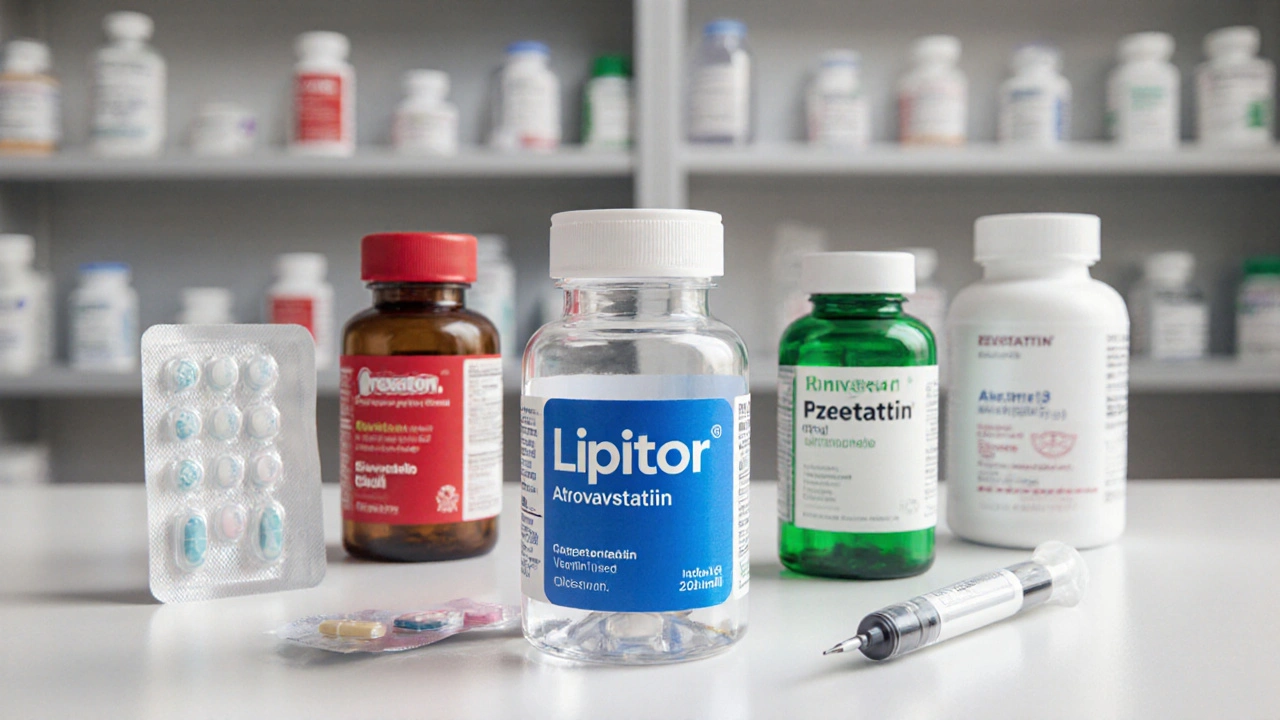A detailed side‑by‑side comparison of Lipitor (atorvastatin) with other statins, ezetimibe, and PCSK9 inhibitors, covering effectiveness, safety, cost, and when to choose each option.
Statin Alternatives – Find the Best Cholesterol‑Lowering Options
When looking at statin alternatives, non‑statin medicines or strategies that lower LDL cholesterol. Also known as cholesterol‑lowering options, they become important if statins cause side effects or don’t hit target levels.
Statin alternatives include cutting‑edge PCSK9 inhibitors, monoclonal antibodies that block the protein PCSK9 and dramatically lower LDL levels. Also called PCSK9‑blocking drugs, they are often prescribed when high LDL persists despite maximized statin therapy. Clinical trials in 2023 showed average LDL reductions of 60% – 70% compared with standard care, and the injection schedule (every two or four weeks) fits many patients’ routines. Side‑effects are usually mild—mostly injection‑site reactions—so they’re a solid choice for those who can’t tolerate oral agents.
Another common choice is ezetimibe, a pill that reduces intestinal cholesterol absorption. Known as Zetia, ezetimibe can be combined with a low‑dose statin or used alone for patients who cannot tolerate any statin. It typically drops LDL by 15% – 20% and has a safety profile that rivals placebo. Because it works in the gut, it doesn’t interfere with liver metabolism, making drug‑interaction worries minimal. Real‑world data from 2024 suggest that adding ezetimibe to modest statin therapy helps more patients reach the 70 mg/dL LDL goal recommended for high‑risk groups.
For those with elevated triglycerides, fibrates, agents that activate PPAR‑α to lower triglycerides and modestly raise HDL. Often referred to as gemfibrozil or fenofibrate, fibrates address a different lipid pattern but are sometimes paired with other non‑statin options. They can cut triglycerides by up to 50% and are especially useful in patients with metabolic syndrome. However, they require monitoring of kidney function and may interact with certain anticoagulants, so a clinician’s guidance is key.
How to pick the right alternative?
Choosing a statin alternative requires evaluating your specific cholesterol goals, tolerance history, and any co‑existing conditions. If you need a rapid, profound LDL drop—think family‑history heart disease or recent cardiovascular events—PCSK9 inhibitors are often the first pick. When you’re looking for a cheap, well‑tolerated oral pill that can be added to a low‑dose statin, ezetimibe fits the bill. If triglycerides dominate your lipid panel, fibrates provide targeted reduction while leaving LDL largely unchanged.
Beyond drugs, lifestyle changes act as a backbone for any regimen. A diet rich in soluble fiber, plant sterols, and omega‑3 fatty acids can amplify the effect of non‑statin meds. Regular aerobic exercise improves HDL and aids weight control, which in turn lowers both LDL and triglycerides. For patients who prefer a “natural” route, bile‑acid sequestrants like cholestyramine or nutraceuticals such as red yeast rice offer modest LDL drops, though adherence can be challenging due to gastrointestinal side‑effects.
Insurance coverage also plays a role. PCSK9 inhibitors, while highly effective, often carry higher out‑of‑pocket costs unless justified by a documented high‑risk status. Ezetimibe and most fibrates are usually covered under standard formularies, making them accessible for broader populations. Discussing cost‑benefit with your healthcare provider ensures you get the most value from your chosen therapy.
All these pieces—drug class, side‑effect profile, cost, and lifestyle—fit together to create a personalized cholesterol‑lowering plan. Below, you’ll find a curated list of articles that dig deeper into each alternative, compare them side‑by‑side, and offer practical tips for making the best choice for your heart health.

